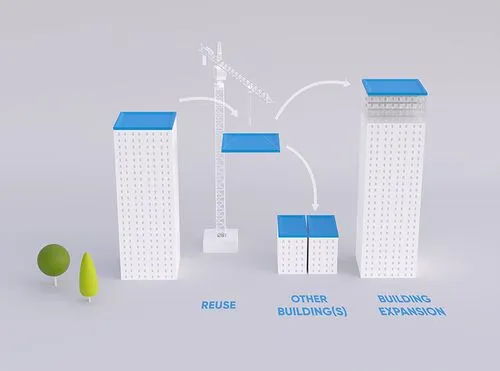
Looking for a durable and reliable solution for your flat roof? EPDM roofing is rapidly gaining popularity among professionals and individuals. This rubber roofing material offers exceptional performance and longevity. In this article, you'll discover why EPDM is increasingly preferred for roof renovations and why it may be the ideal choice for your project as well.
EPDM (Ethylene-Propylene-Diene-Monomer) is a synthetic rubber developed specifically for applications where weather resistance is critical. In roof renovations, it is used as a waterproof membrane for flat roofs.
The main features that distinguish EPDM from traditional roofing are:
With an average lifespan of 50+ years, EPDM far surpasses traditional roofing materials such as bitumen (15-20 years). This makes it particularly cost-effective over the long term, despite a potentially higher initial investment.
An EPDM roof also requires minimal maintenance. An annual inspection is sufficient to detect any problems early. Most damage is easily repaired with special repair kits.
EPDM scores well on several ecological factors:
EPDM can be installed in a variety of ways:
In renovations, the glued system is the most popular because of its simplicity and reliability. The rubber is cut to size, rolled out and then permanently attached with special adhesive.

Compared to popular alternatives such as bitumen, PVC and TPO, EPDM offers several advantages:
Lifetime:
- EPDM: 50+ years
- Bitumen: 15-20 years
- PVC: 20-30 years
- TPO: 20-30 years
Elasticity:
- EPDM: Very high
- Bitumen: Low
- PVC: Average
- TPO: Average
Environmental Impact:
- EPDM: Low
- Bitumen: High
- PVC: Medium
- TPO: Low-Medium
Maintenance:
- EPDM: Minimum
- Bitumen: Regular
- PVC: Periodic
- TPO: Periodic
Fire Resistance:
- EPDM: Good
- Bitumen: Moderate
- PVC: Good
- TPO: Good
The price of an EPDM roof renovation is determined by several factors:
Although the initial investment may be higher than with traditional materials, the long life and low maintenance costs reduce the total cost of ownership.

Read more